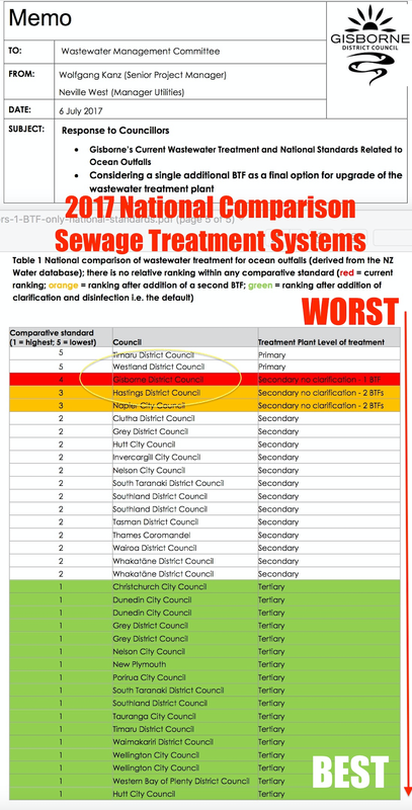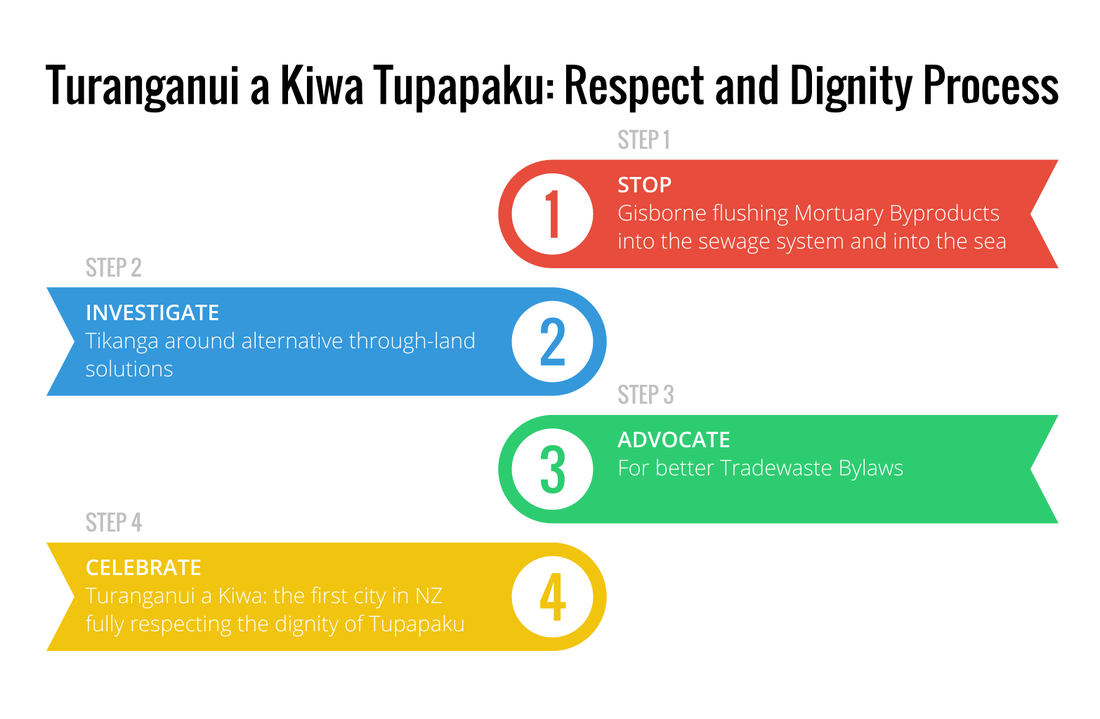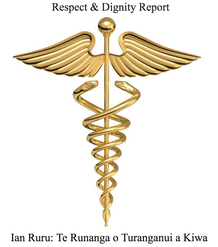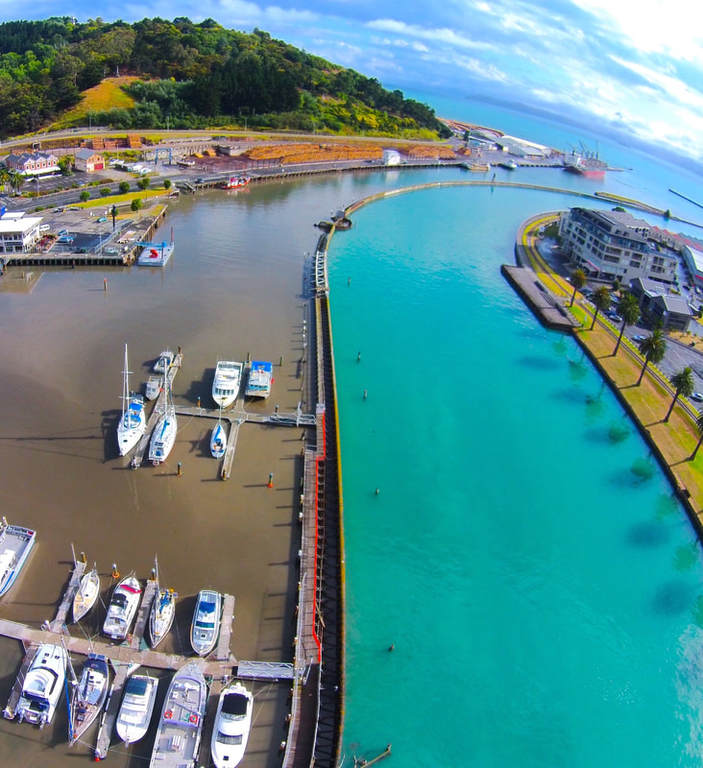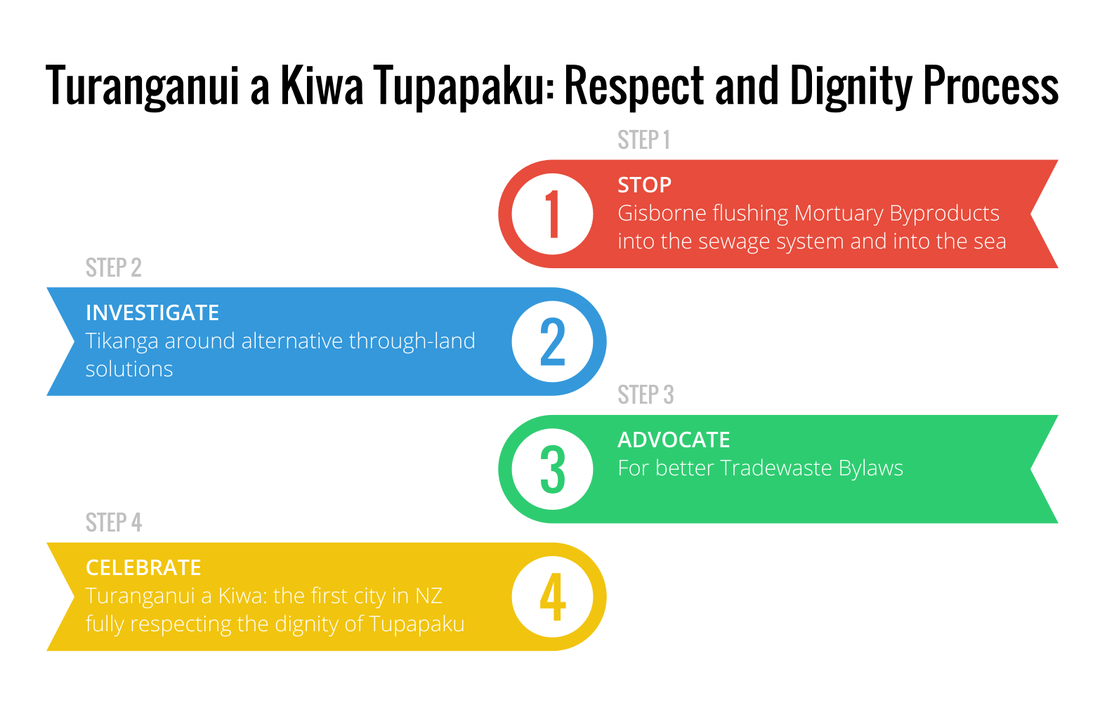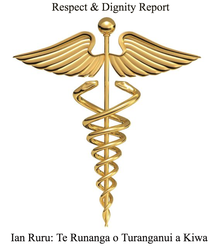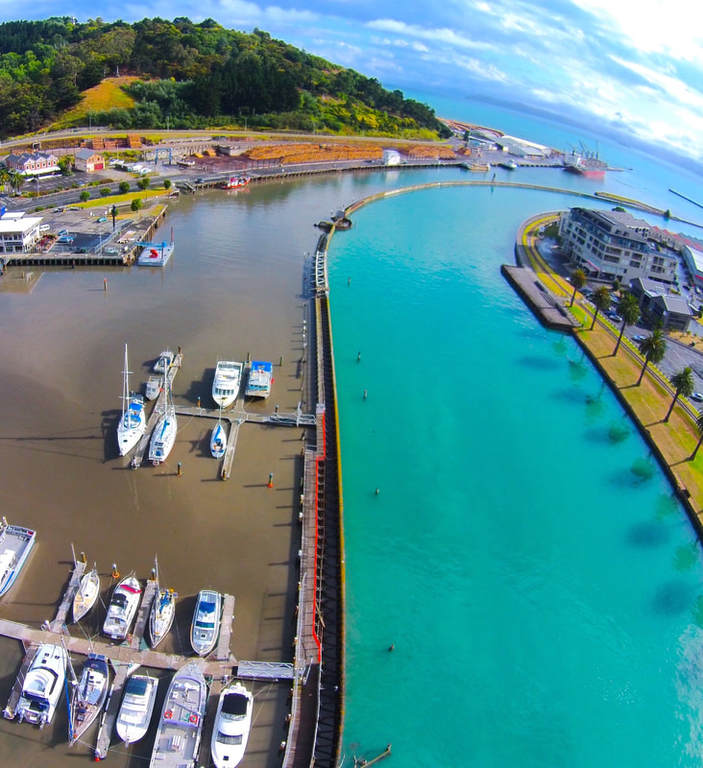What were the three main findings from the independant commisioners?
1 Impacts on tangata whenua values and interests
Tangata whenua have a long and well-known relationship with Turanganui a Kiwa (Poverty Bay) and its waters, fisheries and special sites. The waters have been identified as a taonga to local Iwi and as such their relationship should be protected as a matter of importance.
A major driver for the new wastewater system was to provide for tangata whenua and the wider community’s values and interests in the coastal environment of the Bay.
The 2009 decision of the Independent Commissioners made clear:
“The effects on tangata whenua from the existing wastewater arrangements at Gisborne and of the upgrade proposals has been a paramount consideration.
It has been made very clear at all times, and over many years now, that the continued discharge of untreated wastewater to the waters of Poverty Bay violates Maori tikanga and is a major effect on the cultural and spiritual sensitivities of tangata whenua.
A key component of the on-going action to implement an improved wastewater treatment scheme is the input from tangata whenua, in partnership with the other interested parties ....”
As stated in the 2014 report from WTAG:
“Restoring the mauri is a key theme for tangata whenua and many others in the community, and this is reflected in the consent and other regional planning documents. It is integral to the management of waste streams and water bodies in the District. The restoration of the mauri should be seen, however, as an iterative process. That is, in the context of the current consent, the process of developing and implementing a wastewater management system is itself critical to the concept: both the journey and the destination contribute to restoring the mauri, and so both must be valued and supported by the consent holder.”
The Council has taken steps to involve tangata whenua in the technical and management aspects of the proposals. This is evidenced by the establishment of the WMC and WTAG that both have broad iwi representation. It appears, based on the application and supporting information, that appropriate time and resources have been deployed to address concerns and identify solutions to meet cultural preferences. The proposal includes reference to programmes of work that will explore and address restoring the mauri of Turanganui a Kiwa at a catchment level, encompassing a holistic approach consistent with a Maori world view.
We note there do not appear to be any relevant iwi planning documents or cultural impact assessments, rather the iwi have had opportunities to directly input into the proposal development.
We are satisfied that regard has been given to the impacts on tangata whenua values and interests and provision made for tangata whenua involvement accordingly.
A major driver for the new wastewater system was to provide for tangata whenua and the wider community’s values and interests in the coastal environment of the Bay.
The 2009 decision of the Independent Commissioners made clear:
“The effects on tangata whenua from the existing wastewater arrangements at Gisborne and of the upgrade proposals has been a paramount consideration.
It has been made very clear at all times, and over many years now, that the continued discharge of untreated wastewater to the waters of Poverty Bay violates Maori tikanga and is a major effect on the cultural and spiritual sensitivities of tangata whenua.
A key component of the on-going action to implement an improved wastewater treatment scheme is the input from tangata whenua, in partnership with the other interested parties ....”
As stated in the 2014 report from WTAG:
“Restoring the mauri is a key theme for tangata whenua and many others in the community, and this is reflected in the consent and other regional planning documents. It is integral to the management of waste streams and water bodies in the District. The restoration of the mauri should be seen, however, as an iterative process. That is, in the context of the current consent, the process of developing and implementing a wastewater management system is itself critical to the concept: both the journey and the destination contribute to restoring the mauri, and so both must be valued and supported by the consent holder.”
The Council has taken steps to involve tangata whenua in the technical and management aspects of the proposals. This is evidenced by the establishment of the WMC and WTAG that both have broad iwi representation. It appears, based on the application and supporting information, that appropriate time and resources have been deployed to address concerns and identify solutions to meet cultural preferences. The proposal includes reference to programmes of work that will explore and address restoring the mauri of Turanganui a Kiwa at a catchment level, encompassing a holistic approach consistent with a Maori world view.
We note there do not appear to be any relevant iwi planning documents or cultural impact assessments, rather the iwi have had opportunities to directly input into the proposal development.
We are satisfied that regard has been given to the impacts on tangata whenua values and interests and provision made for tangata whenua involvement accordingly.
2 The partnership between Council and tangata whenua
An important and relevant Treaty principle is a partnership between tangata whenua and the Crown. In this context providing opportunities for a partnership that gives effect to meaningful engagement and participation in decision-making processes is essential.
The Council has provided for active participation of tangata whenua in the decision-making process through the involvement of tangata whenua representatives on the WMC and WTAG. This partnership provides opportunities to express and implement cultural preferences.
Whilst a partnership does not in itself mean all parties will agree, the evidence provided suggests that all parties are supportive of the application to change the conditions of consent. This is referred to in the application, in sections 5.3 and 6, in describing discussions with Te Runanga o Turanganui a Kiwa and with WMC and WTAG with “the input of tangata whenua being a key consideration” for the proposal.
The conditions of consent and the feasibility programme provide an ongoing role for tangata whenua in the implementation and monitoring of the consents.
We are satisfied that the current proposal to change consent conditions has taken into account the principles of the Treaty of Waitangi.
The Council has provided for active participation of tangata whenua in the decision-making process through the involvement of tangata whenua representatives on the WMC and WTAG. This partnership provides opportunities to express and implement cultural preferences.
Whilst a partnership does not in itself mean all parties will agree, the evidence provided suggests that all parties are supportive of the application to change the conditions of consent. This is referred to in the application, in sections 5.3 and 6, in describing discussions with Te Runanga o Turanganui a Kiwa and with WMC and WTAG with “the input of tangata whenua being a key consideration” for the proposal.
The conditions of consent and the feasibility programme provide an ongoing role for tangata whenua in the implementation and monitoring of the consents.
We are satisfied that the current proposal to change consent conditions has taken into account the principles of the Treaty of Waitangi.
3 The extent of actual or potential adverse effects on the environment from deferral of the disinfectant treatment process
This has been considered under the three following headings:
ONE Ecological effects:
These are primarily assessed by prediction and monitoring of the following parameters;
Accumulation and bioaccumulation of heavy metals on the sea bed. Sediment organic and chemical characteristics of the sea bed. Diversity and abundance of infauna (the animals living in the sediments of the ocean floor). Metal contamination of crayfish and crabs. Nutrients and ammonia concentrations in the discharged wastewater.
Overall, based on the previous research and recent monitoring results, the applicant’s consultant considers that there will be less than minor adverse ecological effects arising from the proposal.
TWO Recreational health effects:
These are assessed primarily by consideration of the number of enterococci in the discharge wastewater in the ocean water adjoining the discharge location that can be attributed to the wastewater discharge.
Enterococci are bacteria that are indicators of the possibility of pathogens, i.e. disease causing organisms within the wastewater.
The recent assessment of enterococci levels at Location 2 after the BTF found that the discharge contained an average of 67,000 CFU/100ml with a minimum of 4,000 CFU/100ml and a maximum of 340,000 CFU/100ml.
These monitoring results show there is a significant reduction in enterococci levels provided by existing treatment, including by the BTF.
The levels of enterococci levels are, however, greater than the standard of 1,000 CFU/100ml that would be required to be met at Location 4 after the installation of wastewater disinfection.
Analysis of enterococci levels in the receiving environment has also shown a large reduction since commissioning of the BTF. The recreational and water quality assessment recently undertaken has found that:
The mean Enterococci content has reduced significantly across all of the sites monitored as part of the consent following the installation of the BTF.
At the five sites located 500m from the diffuser there appears to be limited influence from the wastewater discharge on the number of indicator organisms.
The applicant’s consultant has assessed the potential adverse public health effects from the discharge. This takes into account the mixing zone surrounding the outfall and background levels of enterococci and other contaminants which are influenced by high sediment and contaminant loadings from the rivers discharging into Poverty Bay.TWO
THREE Amenity effects.
These are related to the visibility of the discharge plume and can be expected to be primarily related to concentrations of suspended solids and oil and grease in the discharged wastewater.
Monitoring of plumes since the commissioning of the BTF has identified a very low incidence of plumes. From the end of 2010, the Council staff member monitoring plumes observed a number of Grade 2 plumes but nothing greater. Grade 2 is a plume just visible but it is contained within the mixing zone allowed in the consent. Since that time, it is understood from the Council’s wastewater staff that there has continued to be a very low incidence of plumes.
Monitoring data shows that suspended solids concentrations already comply with current consent Clause 33 for both before and after commissioning of the preferred long term management option. This is consistent with the applicant’s assessment that the effects of suspended sediment concentrations in the wastewater discharge on the receiving marine environment are minor and no change is proposed to these levels through this proposal.
The effects of total oil and grease (TOG) concentrations in the wastewater discharge on the receiving marine environment which are primarily related to visual effects have been assessed as minor and no change is proposed to these levels through this proposal.
We agree with the above information and assessments following our perusal of the application details and that any adverse effects on amenity will be minor.
ONE Ecological effects:
These are primarily assessed by prediction and monitoring of the following parameters;
Accumulation and bioaccumulation of heavy metals on the sea bed. Sediment organic and chemical characteristics of the sea bed. Diversity and abundance of infauna (the animals living in the sediments of the ocean floor). Metal contamination of crayfish and crabs. Nutrients and ammonia concentrations in the discharged wastewater.
Overall, based on the previous research and recent monitoring results, the applicant’s consultant considers that there will be less than minor adverse ecological effects arising from the proposal.
TWO Recreational health effects:
These are assessed primarily by consideration of the number of enterococci in the discharge wastewater in the ocean water adjoining the discharge location that can be attributed to the wastewater discharge.
Enterococci are bacteria that are indicators of the possibility of pathogens, i.e. disease causing organisms within the wastewater.
The recent assessment of enterococci levels at Location 2 after the BTF found that the discharge contained an average of 67,000 CFU/100ml with a minimum of 4,000 CFU/100ml and a maximum of 340,000 CFU/100ml.
These monitoring results show there is a significant reduction in enterococci levels provided by existing treatment, including by the BTF.
The levels of enterococci levels are, however, greater than the standard of 1,000 CFU/100ml that would be required to be met at Location 4 after the installation of wastewater disinfection.
Analysis of enterococci levels in the receiving environment has also shown a large reduction since commissioning of the BTF. The recreational and water quality assessment recently undertaken has found that:
The mean Enterococci content has reduced significantly across all of the sites monitored as part of the consent following the installation of the BTF.
At the five sites located 500m from the diffuser there appears to be limited influence from the wastewater discharge on the number of indicator organisms.
The applicant’s consultant has assessed the potential adverse public health effects from the discharge. This takes into account the mixing zone surrounding the outfall and background levels of enterococci and other contaminants which are influenced by high sediment and contaminant loadings from the rivers discharging into Poverty Bay.TWO
THREE Amenity effects.
These are related to the visibility of the discharge plume and can be expected to be primarily related to concentrations of suspended solids and oil and grease in the discharged wastewater.
Monitoring of plumes since the commissioning of the BTF has identified a very low incidence of plumes. From the end of 2010, the Council staff member monitoring plumes observed a number of Grade 2 plumes but nothing greater. Grade 2 is a plume just visible but it is contained within the mixing zone allowed in the consent. Since that time, it is understood from the Council’s wastewater staff that there has continued to be a very low incidence of plumes.
Monitoring data shows that suspended solids concentrations already comply with current consent Clause 33 for both before and after commissioning of the preferred long term management option. This is consistent with the applicant’s assessment that the effects of suspended sediment concentrations in the wastewater discharge on the receiving marine environment are minor and no change is proposed to these levels through this proposal.
The effects of total oil and grease (TOG) concentrations in the wastewater discharge on the receiving marine environment which are primarily related to visual effects have been assessed as minor and no change is proposed to these levels through this proposal.
We agree with the above information and assessments following our perusal of the application details and that any adverse effects on amenity will be minor.
1 Impacts on tangata whenua values and interests
Tangata whenua have a long and well-known relationship with Turanganui a Kiwa (Poverty Bay) and its waters, fisheries and special sites. The waters have been identified as a taonga to local Iwi and as such their relationship should be protected as a matter of importance.
A major driver for the new wastewater system was to provide for tangata whenua and the wider community’s values and interests in the coastal environment of the Bay.
The 2009 decision of the Independent Commissioners made clear:
“The effects on tangata whenua from the existing wastewater arrangements at Gisborne and of the upgrade proposals has been a paramount consideration.
It has been made very clear at all times, and over many years now, that the continued discharge of untreated wastewater to the waters of Poverty Bay violates Maori tikanga and is a major effect on the cultural and spiritual sensitivities of tangata whenua.
A key component of the on-going action to implement an improved wastewater treatment scheme is the input from tangata whenua, in partnership with the other interested parties ....”
As stated in the 2014 report from WTAG:
“Restoring the mauri is a key theme for tangata whenua and many others in the community, and this is reflected in the consent and other regional planning documents. It is integral to the management of waste streams and water bodies in the District. The restoration of the mauri should be seen, however, as an iterative process. That is, in the context of the current consent, the process of developing and implementing a wastewater management system is itself critical to the concept: both the journey and the destination contribute to restoring the mauri, and so both must be valued and supported by the consent holder.”
The Council has taken steps to involve tangata whenua in the technical and management aspects of the proposals. This is evidenced by the establishment of the WMC and WTAG that both have broad iwi representation. It appears, based on the application and supporting information, that appropriate time and resources have been deployed to address concerns and identify solutions to meet cultural preferences. The proposal includes reference to programmes of work that will explore and address restoring the mauri of Turanganui a Kiwa at a catchment level, encompassing a holistic approach consistent with a Maori world view.
We note there do not appear to be any relevant iwi planning documents or cultural impact assessments, rather the iwi have had opportunities to directly input into the proposal development.
We are satisfied that regard has been given to the impacts on tangata whenua values and interests and provision made for tangata whenua involvement accordingly.
A major driver for the new wastewater system was to provide for tangata whenua and the wider community’s values and interests in the coastal environment of the Bay.
The 2009 decision of the Independent Commissioners made clear:
“The effects on tangata whenua from the existing wastewater arrangements at Gisborne and of the upgrade proposals has been a paramount consideration.
It has been made very clear at all times, and over many years now, that the continued discharge of untreated wastewater to the waters of Poverty Bay violates Maori tikanga and is a major effect on the cultural and spiritual sensitivities of tangata whenua.
A key component of the on-going action to implement an improved wastewater treatment scheme is the input from tangata whenua, in partnership with the other interested parties ....”
As stated in the 2014 report from WTAG:
“Restoring the mauri is a key theme for tangata whenua and many others in the community, and this is reflected in the consent and other regional planning documents. It is integral to the management of waste streams and water bodies in the District. The restoration of the mauri should be seen, however, as an iterative process. That is, in the context of the current consent, the process of developing and implementing a wastewater management system is itself critical to the concept: both the journey and the destination contribute to restoring the mauri, and so both must be valued and supported by the consent holder.”
The Council has taken steps to involve tangata whenua in the technical and management aspects of the proposals. This is evidenced by the establishment of the WMC and WTAG that both have broad iwi representation. It appears, based on the application and supporting information, that appropriate time and resources have been deployed to address concerns and identify solutions to meet cultural preferences. The proposal includes reference to programmes of work that will explore and address restoring the mauri of Turanganui a Kiwa at a catchment level, encompassing a holistic approach consistent with a Maori world view.
We note there do not appear to be any relevant iwi planning documents or cultural impact assessments, rather the iwi have had opportunities to directly input into the proposal development.
We are satisfied that regard has been given to the impacts on tangata whenua values and interests and provision made for tangata whenua involvement accordingly.
2 The partnership between Council and tangata whenua
An important and relevant Treaty principle is a partnership between tangata whenua and the Crown. In this context providing opportunities for a partnership that gives effect to meaningful engagement and participation in decision-making processes is essential.
The Council has provided for active participation of tangata whenua in the decision-making process through the involvement of tangata whenua representatives on the WMC and WTAG. This partnership provides opportunities to express and implement cultural preferences.
Whilst a partnership does not in itself mean all parties will agree, the evidence provided suggests that all parties are supportive of the application to change the conditions of consent. This is referred to in the application, in sections 5.3 and 6, in describing discussions with Te Runanga o Turanganui a Kiwa and with WMC and WTAG with “the input of tangata whenua being a key consideration” for the proposal.
The conditions of consent and the feasibility programme provide an ongoing role for tangata whenua in the implementation and monitoring of the consents.
We are satisfied that the current proposal to change consent conditions has taken into account the principles of the Treaty of Waitangi.
The Council has provided for active participation of tangata whenua in the decision-making process through the involvement of tangata whenua representatives on the WMC and WTAG. This partnership provides opportunities to express and implement cultural preferences.
Whilst a partnership does not in itself mean all parties will agree, the evidence provided suggests that all parties are supportive of the application to change the conditions of consent. This is referred to in the application, in sections 5.3 and 6, in describing discussions with Te Runanga o Turanganui a Kiwa and with WMC and WTAG with “the input of tangata whenua being a key consideration” for the proposal.
The conditions of consent and the feasibility programme provide an ongoing role for tangata whenua in the implementation and monitoring of the consents.
We are satisfied that the current proposal to change consent conditions has taken into account the principles of the Treaty of Waitangi.
3 The extent of actual or potential adverse effects on the environment from deferral of the disinfectant treatment process
This has been considered under the three following headings:
ONE Ecological effects:
These are primarily assessed by prediction and monitoring of the following parameters;
Accumulation and bioaccumulation of heavy metals on the sea bed. Sediment organic and chemical characteristics of the sea bed. Diversity and abundance of infauna (the animals living in the sediments of the ocean floor). Metal contamination of crayfish and crabs. Nutrients and ammonia concentrations in the discharged wastewater.
Overall, based on the previous research and recent monitoring results, the applicant’s consultant considers that there will be less than minor adverse ecological effects arising from the proposal.
TWO Recreational health effects:
These are assessed primarily by consideration of the number of enterococci in the discharge wastewater in the ocean water adjoining the discharge location that can be attributed to the wastewater discharge.
Enterococci are bacteria that are indicators of the possibility of pathogens, i.e. disease causing organisms within the wastewater.
The recent assessment of enterococci levels at Location 2 after the BTF found that the discharge contained an average of 67,000 CFU/100ml with a minimum of 4,000 CFU/100ml and a maximum of 340,000 CFU/100ml.
These monitoring results show there is a significant reduction in enterococci levels provided by existing treatment, including by the BTF.
The levels of enterococci levels are, however, greater than the standard of 1,000 CFU/100ml that would be required to be met at Location 4 after the installation of wastewater disinfection.
Analysis of enterococci levels in the receiving environment has also shown a large reduction since commissioning of the BTF. The recreational and water quality assessment recently undertaken has found that:
The mean Enterococci content has reduced significantly across all of the sites monitored as part of the consent following the installation of the BTF.
At the five sites located 500m from the diffuser there appears to be limited influence from the wastewater discharge on the number of indicator organisms.
The applicant’s consultant has assessed the potential adverse public health effects from the discharge. This takes into account the mixing zone surrounding the outfall and background levels of enterococci and other contaminants which are influenced by high sediment and contaminant loadings from the rivers discharging into Poverty Bay.TWO
THREE Amenity effects.
These are related to the visibility of the discharge plume and can be expected to be primarily related to concentrations of suspended solids and oil and grease in the discharged wastewater.
Monitoring of plumes since the commissioning of the BTF has identified a very low incidence of plumes. From the end of 2010, the Council staff member monitoring plumes observed a number of Grade 2 plumes but nothing greater. Grade 2 is a plume just visible but it is contained within the mixing zone allowed in the consent. Since that time, it is understood from the Council’s wastewater staff that there has continued to be a very low incidence of plumes.
Monitoring data shows that suspended solids concentrations already comply with current consent Clause 33 for both before and after commissioning of the preferred long term management option. This is consistent with the applicant’s assessment that the effects of suspended sediment concentrations in the wastewater discharge on the receiving marine environment are minor and no change is proposed to these levels through this proposal.
The effects of total oil and grease (TOG) concentrations in the wastewater discharge on the receiving marine environment which are primarily related to visual effects have been assessed as minor and no change is proposed to these levels through this proposal.
We agree with the above information and assessments following our perusal of the application details and that any adverse effects on amenity will be minor.
ONE Ecological effects:
These are primarily assessed by prediction and monitoring of the following parameters;
Accumulation and bioaccumulation of heavy metals on the sea bed. Sediment organic and chemical characteristics of the sea bed. Diversity and abundance of infauna (the animals living in the sediments of the ocean floor). Metal contamination of crayfish and crabs. Nutrients and ammonia concentrations in the discharged wastewater.
Overall, based on the previous research and recent monitoring results, the applicant’s consultant considers that there will be less than minor adverse ecological effects arising from the proposal.
TWO Recreational health effects:
These are assessed primarily by consideration of the number of enterococci in the discharge wastewater in the ocean water adjoining the discharge location that can be attributed to the wastewater discharge.
Enterococci are bacteria that are indicators of the possibility of pathogens, i.e. disease causing organisms within the wastewater.
The recent assessment of enterococci levels at Location 2 after the BTF found that the discharge contained an average of 67,000 CFU/100ml with a minimum of 4,000 CFU/100ml and a maximum of 340,000 CFU/100ml.
These monitoring results show there is a significant reduction in enterococci levels provided by existing treatment, including by the BTF.
The levels of enterococci levels are, however, greater than the standard of 1,000 CFU/100ml that would be required to be met at Location 4 after the installation of wastewater disinfection.
Analysis of enterococci levels in the receiving environment has also shown a large reduction since commissioning of the BTF. The recreational and water quality assessment recently undertaken has found that:
The mean Enterococci content has reduced significantly across all of the sites monitored as part of the consent following the installation of the BTF.
At the five sites located 500m from the diffuser there appears to be limited influence from the wastewater discharge on the number of indicator organisms.
The applicant’s consultant has assessed the potential adverse public health effects from the discharge. This takes into account the mixing zone surrounding the outfall and background levels of enterococci and other contaminants which are influenced by high sediment and contaminant loadings from the rivers discharging into Poverty Bay.TWO
THREE Amenity effects.
These are related to the visibility of the discharge plume and can be expected to be primarily related to concentrations of suspended solids and oil and grease in the discharged wastewater.
Monitoring of plumes since the commissioning of the BTF has identified a very low incidence of plumes. From the end of 2010, the Council staff member monitoring plumes observed a number of Grade 2 plumes but nothing greater. Grade 2 is a plume just visible but it is contained within the mixing zone allowed in the consent. Since that time, it is understood from the Council’s wastewater staff that there has continued to be a very low incidence of plumes.
Monitoring data shows that suspended solids concentrations already comply with current consent Clause 33 for both before and after commissioning of the preferred long term management option. This is consistent with the applicant’s assessment that the effects of suspended sediment concentrations in the wastewater discharge on the receiving marine environment are minor and no change is proposed to these levels through this proposal.
The effects of total oil and grease (TOG) concentrations in the wastewater discharge on the receiving marine environment which are primarily related to visual effects have been assessed as minor and no change is proposed to these levels through this proposal.
We agree with the above information and assessments following our perusal of the application details and that any adverse effects on amenity will be minor.
Who Were the independent hearing commissioners in 2015?
Messrs Nigel Mark-Brown, Antoine Coffin and Alan Watson were appointed as Independent Hearings Commissioners
The appointment of independent Commissioners was deemed appropriate by the Council given the Council is both the applicant and the consent authority responsible for deciding the application. In this decision report it is referred to as “the Council” in its role as the consent authority and otherwise where appropriate as “the applicant”.
The information available to us comprised the application and its attachments and the section 42A RMA report prepared by Mr Todd Whittaker, an independent planning consultant. The Commissioners are each familiar with the site and locality area for the proposal from earlier visits and/or work in Gisborne.
The appointment of independent Commissioners was deemed appropriate by the Council given the Council is both the applicant and the consent authority responsible for deciding the application. In this decision report it is referred to as “the Council” in its role as the consent authority and otherwise where appropriate as “the applicant”.
The information available to us comprised the application and its attachments and the section 42A RMA report prepared by Mr Todd Whittaker, an independent planning consultant. The Commissioners are each familiar with the site and locality area for the proposal from earlier visits and/or work in Gisborne.
WHAT DID THEY SEE AS THE PRINCIPAL ISSUES IN CONTENTION?
The principal issues in contention are:
a) Impacts on tangata whenua values and interests.
b) The partnership between Council and tangata whenua
c) The extent of actual or potential adverse effects on the environment from deferral of the disinfectant treatment process.
d) The effects from amendments to the monitoring clauses.
e) Are the extended dates sought reasonable.
f) The positive effects.
g) Whether the application/proposal is in accordance with the relevant planning documents.
h) Sections 105 and 107 RMA considerations.
i) Whether the proposal will promote the sustainable management of natural and physical resources and be consistent with the associated principles in accordance with Part 2 of the RMA.
a) Impacts on tangata whenua values and interests.
b) The partnership between Council and tangata whenua
c) The extent of actual or potential adverse effects on the environment from deferral of the disinfectant treatment process.
d) The effects from amendments to the monitoring clauses.
e) Are the extended dates sought reasonable.
f) The positive effects.
g) Whether the application/proposal is in accordance with the relevant planning documents.
h) Sections 105 and 107 RMA considerations.
i) Whether the proposal will promote the sustainable management of natural and physical resources and be consistent with the associated principles in accordance with Part 2 of the RMA.
can I download a full copy of the decision?
| worg-report-6-july-2018.pdf | |
| File Size: | 1491 kb |
| File Type: | |
What is the main issue for Tangata whenua?
RESTORE THE MAURI OF TURANGANUI A KIWA
how do we do this?
Turn off the ocean outfall pipe
Clause 8
The permit holder shall use its best endeavours to adopt those AUD options that are identified as feasible and which will enable the progressive removal of the treated human sewage from the discharge, via the marine outfall, with the objective of complete removal by 2020.
The permit holder shall use its best endeavours to adopt those AUD options that are identified as feasible and which will enable the progressive removal of the treated human sewage from the discharge, via the marine outfall, with the objective of complete removal by 2020.
remove mortuary waste from the sewage system
Separating Mortuary Byproducts from the Municipal Sewage System:
Recommendations:
Te Runanga o Turanganui a Kiwa
- This is consistent with respecting the dignity of our ‘dearly departed’ our deceased loved ones and treating their whole being with the same level of respect and dignity.
- The body of the deceased is treated with the utmost care and respect. We recommend that all parts of the deceased are treated in the same manner.
- This is consistent with the Wastewater Treatment Project and associated Resource Consent requirements.
- Gisborne City is progressing an admirable Wastewater Treatment process. This recommendation is consistent with these plans and Consent Requirements.
- This is consistent with the beliefs and views that Tangata Whenua have held since the municipal sewage system was built in 1965.
Recommendations:
- That mortuary byproducts be separated from the municipal sewage system
- That a land-based solution (such as the ‘Wisconsin Mound’) be investigated. Ray Farmer is our specialist in this area.
- That a Feasibility Report be developed for the Wastewater Management Committee.
Te Runanga o Turanganui a Kiwa
fix the te karaka sewage system
fix the toxic dumpsite at paokahu
FIX SEWAGE overflows into our rivers
REStore the mauri of turanganui a kiwa
how do we do this?
Turn off the ocean outfall pipe
Clause 8
The permit holder shall use its best endeavours to adopt those AUD options that are identified as feasible and which will enable the progressive removal of the treated human sewage from the discharge, via the marine outfall, with the objective of complete removal by 2020.
The permit holder shall use its best endeavours to adopt those AUD options that are identified as feasible and which will enable the progressive removal of the treated human sewage from the discharge, via the marine outfall, with the objective of complete removal by 2020.
remove mortuary waste from the sewage system
Separating Mortuary Byproducts from the Municipal Sewage System:
Recommendations:
Te Runanga o Turanganui a Kiwa
- This is consistent with respecting the dignity of our ‘dearly departed’ our deceased loved ones and treating their whole being with the same level of respect and dignity.
- The body of the deceased is treated with the utmost care and respect. We recommend that all parts of the deceased are treated in the same manner.
- This is consistent with the Wastewater Treatment Project and associated Resource Consent requirements.
- Gisborne City is progressing an admirable Wastewater Treatment process. This recommendation is consistent with these plans and Consent Requirements.
- This is consistent with the beliefs and views that Tangata Whenua have held since the municipal sewage system was built in 1965.
Recommendations:
- That mortuary byproducts be separated from the municipal sewage system
- That a land-based solution (such as the ‘Wisconsin Mound’) be investigated. Ray Farmer is our specialist in this area.
- That a Feasibility Report be developed for the Wastewater Management Committee.
Te Runanga o Turanganui a Kiwa
fix the te karaka sewage system
fix the toxic dumpsite at paokahu
FIX SEWAGE overflows into our rivers
how can the kiwa group help?
Turn off the ocean outfall pipe
Clause 8
The permit holder shall use its best endeavours to adopt those AUD options that are identified as feasible and which will enable the progressive removal of the treated human sewage from the discharge, via the marine outfall, with the objective of complete removal by 2020.
The permit holder shall use its best endeavours to adopt those AUD options that are identified as feasible and which will enable the progressive removal of the treated human sewage from the discharge, via the marine outfall, with the objective of complete removal by 2020.
The KIWA GROUP TERMS OF REFERENCE
2017 KIWA Report
